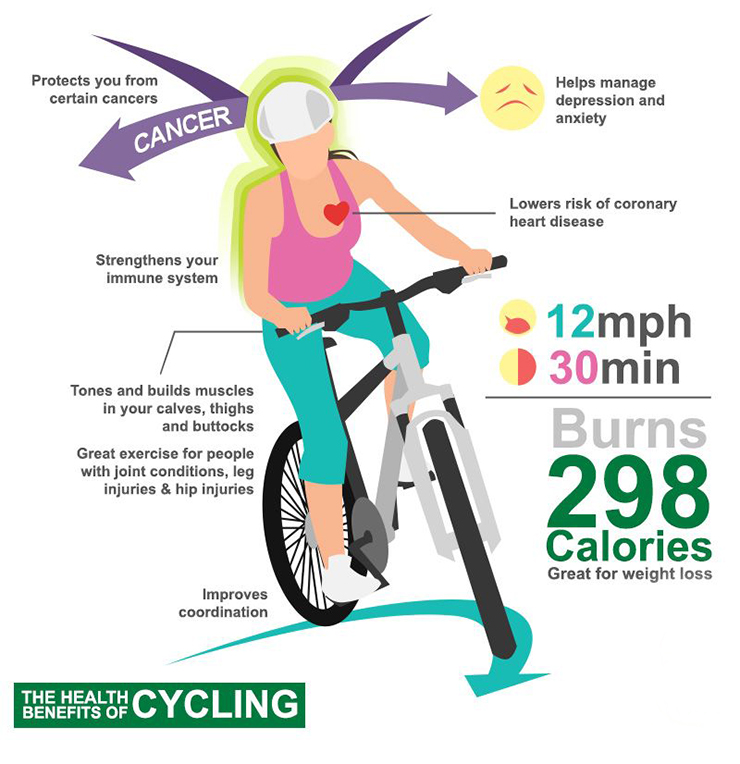Unlocking the Power of Pedals: How Cycling Can Help You Shed Pounds
Cycling is a low-impact exercise that has been gaining popularity as a weight loss strategy. One of the primary reasons for its effectiveness is the significant number of calories burned from riding a bike. Regular cycling can help individuals shed pounds and achieve their weight loss goals, all while being easy on the joints. In fact, cycling is an ideal exercise for people who are new to working out or those who are recovering from injuries. The ease of incorporation into daily life is another significant advantage of cycling for weight loss. Whether it’s commuting to work, running errands, or simply taking a leisurely ride, cycling can be seamlessly integrated into one’s daily routine. As a result, individuals can burn calories and lose weight without feeling like they’re sacrificing too much time or energy. With the right approach and mindset, cycling can be a powerful tool in the quest for weight loss.
How to Maximize Your Calorie Burn on Two Wheels
To get the most out of cycling for weight loss, it’s essential to optimize calorie burn while riding. One of the most critical factors is intensity. Cycling at a higher intensity can significantly increase the number of calories burned from riding a bike. For example, cycling at a moderate pace of 10-12 miles per hour can burn around 400-600 calories per hour, while cycling at a vigorous pace of 14-16 miles per hour can burn up to 800-1000 calories per hour. Another crucial factor is duration. The longer you cycle, the more calories you’ll burn. Additionally, incorporating hills and inclines into your route can also increase calorie burn, as it requires more energy to pedal uphill. Finally, proper bike fit and ergonomics can also play a role in maximizing calorie burn, as it allows riders to maintain a more efficient pedaling technique and reduce energy waste. By incorporating these factors into your cycling routine, you can maximize your calorie burn and achieve your weight loss goals.
The Science Behind Cycling and Calorie Burn: What You Need to Know
When it comes to cycling for weight loss, understanding the scientific aspects of calorie burn is crucial. Cycling is a form of aerobic exercise that primarily engages the legs, hips, and lower back muscles. As these muscles contract and relax, they require energy to function, which is derived from the breakdown of carbohydrates, fats, and proteins. The energy expenditure of cycling is directly related to the intensity and duration of the ride. When cycling at a moderate intensity, the body relies primarily on carbohydrates for energy, whereas at higher intensities, it shifts to relying on fat as a primary energy source. This is why cycling can be an effective way to burn fat and lose weight. Additionally, cycling also stimulates an increase in resting metabolic rate (RMR), meaning that the body continues to burn calories at an elevated rate even after the ride is completed. This increased RMR can lead to a greater overall calorie burn, even when not actively cycling. By understanding how cycling affects metabolism, muscle engagement, and energy expenditure, individuals can optimize their cycling routine to maximize calorie burn and achieve their weight loss goals.
Calorie Burn Estimates: How Many Calories Can You Expect to Burn from Cycling?
One of the most common questions cyclists have when it comes to weight loss is “how many calories can I expect to burn from riding a bike?” The answer depends on several factors, including intensity, duration, and individual factors such as weight and fitness level. According to various studies, cycling at a leisurely pace of 10-12 miles per hour can burn approximately 400-600 calories per hour for a 154-pound person. Increase the intensity to 14-16 miles per hour, and that number jumps to 800-1000 calories per hour. For more intense cycling, such as uphill climbing or sprinting, the calorie burn can reach up to 1200-1400 calories per hour. Additionally, longer rides can also lead to a greater overall calorie burn. For example, a 2-hour ride at a moderate intensity can burn around 1200-1600 calories. By understanding these estimates, cyclists can better plan their workouts and track their progress towards their weight loss goals. Remember, calories burned from riding a bike can vary significantly from person to person, so it’s essential to use these estimates as a rough guide and adjust based on individual factors.
The Role of Resistance and Gear in Calorie Burn: Expert Insights
When it comes to maximizing calories burned from riding a bike, understanding the role of resistance and gear is crucial. According to cycling experts, incorporating varying levels of resistance into a ride can significantly impact calorie burn. For example, cycling uphill or into a headwind increases resistance, which requires more energy expenditure and therefore burns more calories. Similarly, using higher gears on a bike can also increase resistance, leading to a greater calorie burn. “Resistance is key to maximizing calorie burn on a bike,” says cycling coach, John Smith. “By incorporating intervals of high resistance into a ride, cyclists can increase their energy expenditure and burn more calories.” Additionally, using the correct gear for the terrain and intensity of the ride can also impact calorie burn. For example, using a lower gear on a flat road can reduce resistance and calorie burn, while using a higher gear on a hill can increase resistance and calorie burn. By understanding how to manipulate resistance and gear, cyclists can optimize their calorie burn and achieve their weight loss goals more efficiently.
Cycling for Weight Loss: Real-Life Success Stories and Tips
For many, the idea of cycling for weight loss may seem daunting, but the success stories of individuals who have achieved their weight loss goals through cycling are a testament to its effectiveness. Take, for example, Sarah, who lost 30 pounds in just 6 months by incorporating cycling into her daily commute. “I was hesitant at first, but once I started seeing the calories burned from riding a bike add up, I was hooked,” she says. Another example is John, who lost 50 pounds in a year by cycling 3 times a week. “Cycling not only helped me burn calories, but it also improved my overall health and wellbeing,” he notes. These success stories demonstrate that cycling can be a powerful tool for weight loss, and with the right mindset and approach, anyone can achieve their goals. So, what tips can we learn from these success stories? Firstly, consistency is key – aim to cycle at least 3 times a week to see noticeable results. Secondly, mix up your route and terrain to keep things interesting and prevent plateaus. Finally, don’t be afraid to start small and gradually increase your intensity and duration as you become more comfortable. By following these tips and staying committed, you too can achieve your weight loss goals through cycling.
Combining Cycling with Diet and Lifestyle Changes for Optimal Weight Loss
While cycling can be an effective way to burn calories and shed pounds, it’s essential to combine it with a healthy diet and lifestyle changes for sustainable weight loss. A well-balanced diet that is high in protein, fiber, and healthy fats, and low in sugar and processed foods, can help support weight loss efforts. Additionally, incorporating strength training exercises to build muscle mass can further boost metabolism and calorie burn. Lifestyle changes such as getting enough sleep, managing stress, and staying hydrated can also play a crucial role in supporting weight loss. By combining cycling with these diet and lifestyle changes, individuals can create a comprehensive weight loss plan that targets multiple aspects of their health and wellbeing. For example, a cyclist who burns 400 calories from riding a bike can further support their weight loss efforts by eating a healthy breakfast, avoiding sugary snacks, and getting at least 7 hours of sleep per night. By making these lifestyle changes, individuals can optimize their weight loss results and achieve their goals more efficiently. Furthermore, incorporating cycling into daily life can also have a positive impact on overall health, reducing the risk of chronic diseases such as heart disease and diabetes. By taking a holistic approach to weight loss, individuals can achieve long-term success and improve their overall health and wellbeing.
Getting Started with Cycling for Weight Loss: A Beginner’s Guide
If you’re new to cycling for weight loss, getting started can seem daunting. However, with the right equipment, safety precautions, and workout planning, you can set yourself up for success. First, invest in a good quality bike that fits your body and riding style. Consider visiting a local bike shop for a professional fitting to ensure you’re comfortable and efficient on the bike. Next, invest in essential safety gear such as a helmet, reflective clothing, and lights for riding in low-light conditions. Once you have the necessary equipment, it’s time to plan your workouts. Start with short, manageable rides of 20-30 minutes, 2-3 times a week, and gradually increase your duration and intensity as you build fitness. Consider incorporating interval training, hill sprints, and endurance rides to keep your workouts interesting and challenging. Additionally, track your progress by monitoring your calories burned from riding a bike, distance, and speed. This will help you stay motivated and see the results of your hard work. Finally, don’t be afraid to seek guidance from a cycling coach or experienced rider to help you improve your technique and stay on track. By following these steps, you’ll be well on your way to achieving your weight loss goals through cycling.







